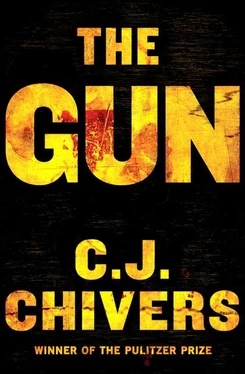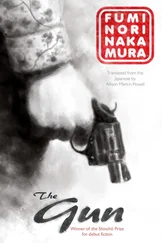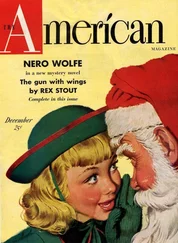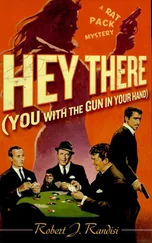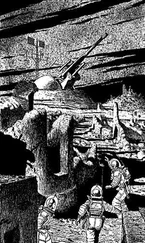I asked if he had a plan to retrofit the weapons in the field with this buffer and he said he did not. First production of the new buffer, he said, would be in January and they would go on new weapons. He said that if the buffers were sent to the field for the old weapons they would not be available to go on the new weapons that also are going to the field. I asked if he had plans to get a special priority to increase the production rate and speed up availability of the buffer and he apparently did not. I also asked about clearing up the fouling caused by ball powder. He did not say that anything definitive had been done to correct the problem.
I asked him if there were any reports yet from Vietnam indicating the occurrence, in fact, of the excessive malfunctions that one would expect to be occurring in the field as a result of breakages and malfunctions induced by excessive cyclic rate and the malfunctions induced by fouling, complicated by difficult cleaning conditions in jungle war and normal poor distribution of cleaning equipment. He said there were some, but didn’t elaborate at this time.
Far from the war, the two colonels discussed a list of factors compounding the rifle’s poor performance—lackluster weapons-cleaning habits, shortages of cleaning equipment, insufficient training, and a host of jerry-rigged practices by soldiers, including soaking ammunition with oil. This was not how the M-16’s introduction as the primary firearm in Vietnam was supposed to go. And Colonel Yount’s inaction was not how military officers were expected to carry out their duties. Colonel Hallock wanted the problems remedied. But his bureaucratic instincts interfered. He was equally interested in restricting who knew of the problems. There was a scandal to contain, even if it meant limiting the number of technicians working to fix the malfunctions. Colonel Hallock all but grilled Colonel Yount, and impressed upon him the need to keep the problems quiet.
I said, as I have on several other occasions during the last year, that this situation was potentially explosive with the Congress, within Defense, in the Army, and with the public, and that the malfunctions alone could be expecting to be causing loss of soldiers [sic] lives, even though the data showed the XM16E1 to be more effective than other rifles even with the malfunctions. Also, that if there were excessive malfunction rates, the troops would lose confidence in their weapon, even though the causes were not due to weapon design, and that it was a serious thing for the troops to lose confidence in their weapon. I urged again that highest priority be given to correct this situation and also that he consider the security aspect of the information in technical and other channels. 51
Colonel Hallock stamped his memorandum SECRET HOLD CLOSE repeatedly, and sent it to Dr. Jacob Stockfisch, codirector of the Force Planning and Analysis Office, urging that the gloomy information be provided to the army chief of staff. (Stockfisch’s office reported both to the secretary of the army and the army chief of staff; it was a strong proponent of the M-16.) Read against what was happening in Vietnam, and as more rifles known to be unreliable were being manufactured and issued to men headed to combat, the correspondence was chilling. The military had the option of delaying the issue of the M-16 until its shortcomings were worked out, and to allow troops to carry weapons that worked. But this would have meant admitting to a mistake and sounding an alarm. It would have required an officer to display courage. Instead, corporate instincts and self-protection had trumped integrity and good sense. After returning to his office at the Rock Island Arsenal, Colonel Yount made a change. As of November 29, his weekly “significant action report” as head of the office managing the M-16 carried a new line: “The report must not be reproduced, filed or referenced in any official correspondence.” Colonel Yount added that only he and two other people were allowed to keep file copies of his reports. “All other copies,” he wrote, “will be destroyed within 10 days of receipt.” 52At a time when the M-16 program desperately needed candor, attention, and more resources, and when commanders and troops in the field should have been informed of the problems emerging in Vietnam, another cover-up had begun.
It is easy, based on the existing records, to see Colonel Yount and Colonel Hallock as bureaucratic villains; certainly they acted against the interests of the troops in Vietnam. Their careerist behavior was of a familiar species, and ugly, even unconscionable, when revealed. If some of the men who had been in fighting in which M-16s had failed could have read what Colonel Hallock wrote, they would have demanded investigations. Rage was high enough in Vietnam that no small number of grunts would have wanted to do worse. Combat is an intensely personal experience, and it was especially so in the close-quarters savagery of Vietnam. Troops needed to have faith not just in their rifles, as Colonel Hallock suggested, but in their officers. And it was difficult to imagine an officer who believed men were dying because their rifles were failing but wanted to restrict who knew about the causes, or even that this was the case.
But these two colonels were hardly alone. They were part of a procurement and advocacy phenomenon that had slipped from control. Since early 1963, McNamara’s office had pushed the M-16 along without check. Colonel Yount managed the program, but he did not provide its direction or have control over many of its decisions. With General Westmoreland calling for more rifles, all involved in the rifle program faced internal pressure to keep M-16s flowing off the assembly lines and into Vietnam. And yet it was a fateful moment to choose to play along quietly. It was in many ways a last chance. Effective November 4, the army had decided to adopt the M-16 as its standard rifle. Step by step, decision by decision, without clear signs of institutional intent, the watermelon shoot on Boutelle’s farm and the untrustworthy Project AGILE report had led to policy. The M-16, a rifle with a flawed development history, was to replace the M-14, even though the army knew the powder-rifle mismatch was causing high M-16 malfunction rates, and before a technical solution had been put into place. The decision was made as reports were streaming back from Vietnam that the rifles were jamming, apparently for many different reasons, and that the rifles bound for jungle duty were “sadly lacking in corrosion resistance.” As for the M-16’s documented reliability problems, in a secret memorandum on November 7, General Johnson noted that “correction of deficiencies should be accomplished in a manner that does not delay new or on-going production. Priority will be given to eliminating any weapons malfunction problems in the field.” 53In other words, M-16s were to be rushed to Vietnam. The army would fix them later, if and when fixes could be found.
So the policy was set, and the people who knew most intimately of the problems were keeping mum. The questions now were of consequences. How bad would the problems in the field be? How would the army and Marine Corps react if the problems turned out to be worse than what was known? And what would the troops, who wanted to believe in their officers and their war, think when their new rifles suddenly went quiet in a fight?
Answers quickly appeared. In early February 1967, the armorers for Second Battalion, Ninth Marines, stationed near the coast at Phu Bai, Vietnam, grew concerned about the new rifles in the battalion’s custody. The Marine Corps was beginning to receive its share of M-16s. Though this battalion’s rifles had been used just four times, and only for training, they were already pitted. The armorers reported their concerns and offered other observations as well. The weapons rusted easily; a recessed area on the bolt was difficult to clean; during firing, the trigger pin and hammer pin “tended to work their way out of the receiver.” The armorers also wrote that “we experienced more than a normal amount of ruptured cartridges.” 54The mix of rapid corrosion and cleaning difficulties were an ill-boding combination for a rifle issued for fighting in rain forests and rice paddies. The Marine supply officers seemed alarmed. “This rifle is currently being utilized by units engaged in active combat,” they wrote to the Rock Island Arsenal. “Therefore, an expeditious evaluation is requested.” 55The complaint reached the office of Colonel Yount. Before an army technician was able to examine the weapons, supervisors at the arsenal ordered him to hand out new maintenance instructions that were to be “taken by the user to correct reported problem.”
Читать дальше
